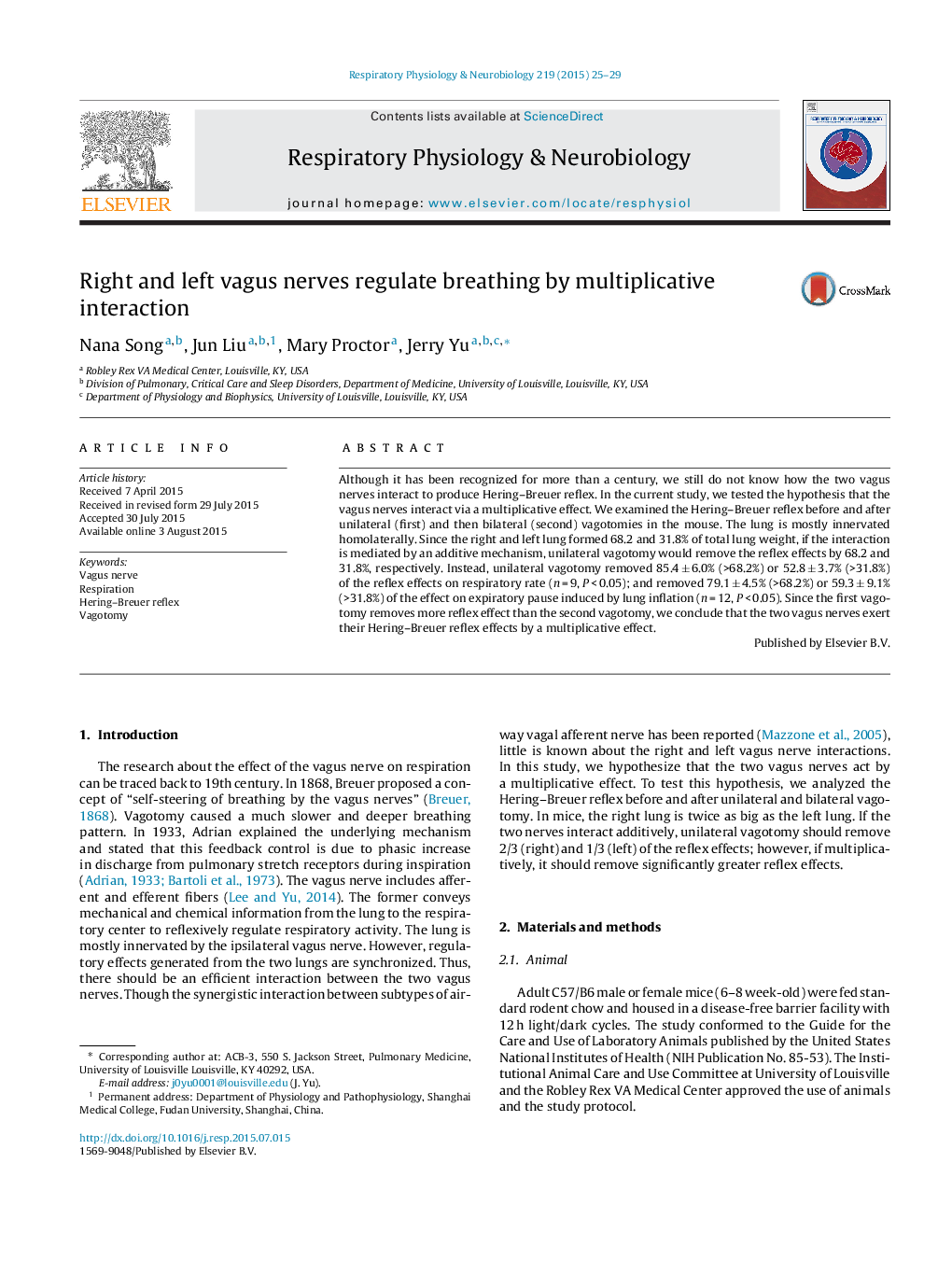| Article ID | Journal | Published Year | Pages | File Type |
|---|---|---|---|---|
| 2846784 | Respiratory Physiology & Neurobiology | 2015 | 5 Pages |
•We examined Hering–Breuer reflex at three conditions (vagal intact, unilateral vagotomy and bilateral vagotomy) in the mouse.•We found that the right vagus nerve exerts more Hering–Breuer reflex effect than the left vagus nerve and the right lung is bigger than the left lung.•We also found that the first vagotomy always has a stronger effect than the second vagotomy, thus, the two vagus nerves exert their respiratory reflexes multiplicatively.
Although it has been recognized for more than a century, we still do not know how the two vagus nerves interact to produce Hering–Breuer reflex. In the current study, we tested the hypothesis that the vagus nerves interact via a multiplicative effect. We examined the Hering–Breuer reflex before and after unilateral (first) and then bilateral (second) vagotomies in the mouse. The lung is mostly innervated homolaterally. Since the right and left lung formed 68.2 and 31.8% of total lung weight, if the interaction is mediated by an additive mechanism, unilateral vagotomy would remove the reflex effects by 68.2 and 31.8%, respectively. Instead, unilateral vagotomy removed 85.4 ± 6.0% (>68.2%) or 52.8 ± 3.7% (>31.8%) of the reflex effects on respiratory rate (n = 9, P < 0.05); and removed 79.1 ± 4.5% (>68.2%) or 59.3 ± 9.1% (>31.8%) of the effect on expiratory pause induced by lung inflation (n = 12, P < 0.05). Since the first vagotomy removes more reflex effect than the second vagotomy, we conclude that the two vagus nerves exert their Hering–Breuer reflex effects by a multiplicative effect.
